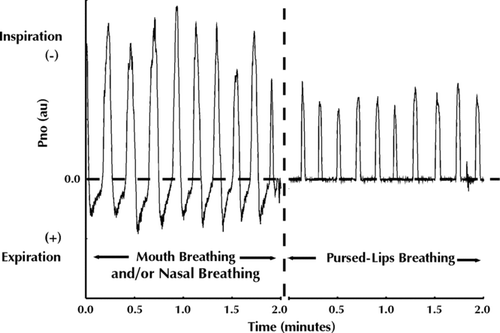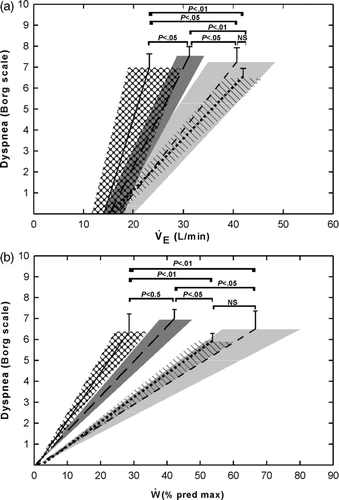Figures & data
Figure 1. Example of a nasal pressure (Pno) recording obtained in a representative subject. Expiration performed through either the nose or the mouth produces a positive deflection of Pno (left half), whereas PLB causes Pno to drop to 0 cm H2O during the expiratory phase of breathing (right half).

Table 1. Characteristics of the 51 patients with COPD stratified according to the four PLB groups
Figure 2. The average values (±SD) for the (a) FEV1 (% predicted), (b) FEV1/FVC (%), and (c) FEF 25–75 (% predicted) in the four PLB groups. P values indicate significance in post hoc pairwise comparisons.

Figure 3. The relationship of (a) dyspnea measured using a modified Borg scale and VE and (b) dyspnea to W% predicted max. Lines represent the average slopes for the four PLB groups. Shaded areas represent ±SE for the slopes. Error bars are ±SE for dyspnea. Solid lines and cross hatched areas, PLBrest; long dashed lines and dark grey areas, PLBex; short dashed lines and light grey areas, PLBrec; dotted lines and diagonally lined areas, PLBno.

Table 2. Physiological parameters at end exercise in 51 patients with COPD stratified according to the four PLB groups
Table 3. Univariate logistic regression models for the performance of PLB during exercise
Table 4. Multivariate logistic regression model for the performance of PLB during exercise